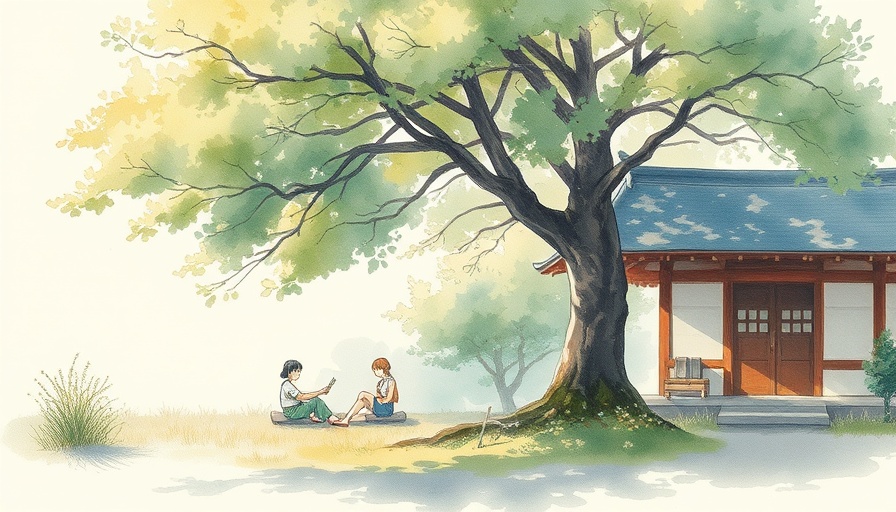
Remembering Chiura Obata: The Artist Behind the Tragedy
In the wake of the devastating 1906 San Francisco earthquake, an artist named Chiura Obata transformed trauma into art. Just days following the catastrophe, he picked up his sketchbook and began to capture the heartache and resilience of a city in ruins. Now, the Asian Art Museum’s exhibit "Bearing Witness: Selected Works by Chiura Obata" allows us to witness his poignant interpretations of destruction and survival.
Historical Context of the 1906 Earthquake
The earthquake that hit San Francisco on April 18, 1906, measured a staggering 7.9 on the Richter scale and decimated vast areas. Beyond physical destruction, this seismic event triggered fires that engulfed the city, leaving thousands homeless. Chiura Obata, a young artist who had recently immigrated from Japan, felt compelled to document the aftermath. His watercolors serve as a historical record, preserving a moment in time that changed the lives of many.
Witnessing History Through Art
Just a week after the earthquake, Obata ventured out to sketch scenes that spoke volumes about resilience. His artworks reveal not only the loss—the crumbling City Hall, the devastation along Clay Street—but also moments of humanity amidst chaos. His depictions of makeshift camps where displaced Chinese and Japanese Americans sought refuge shed light on the community’s struggles and fortitude in the disaster’s aftermath.
The Cultural Significance of Obata's Work
Obata’s artistry transcended mere documentation. It was reflective of his experience as an outsider trying to find his place in a new country at a time of racial tension and upheaval. His works not only serve as artistic expressions but also as cultural artifacts that give voice to the marginalized communities affected. This layer of meaning deepens our appreciation for Obata’s talent and intent, connecting us with historical narratives that have often been overlooked.
Local Relevance: The Struggles and Triumphs of San Francisco
Residents of present-day San Francisco can resonate with Obata’s work, as the city continues to grapple with its identity in the face of natural and social upheavals. From ongoing debates about gentrification to the recent challenges posed by social movements, the themes of resilience, community, and cultural expression are still very much alive. Understanding our local history through the lens of such artists helps foster a richer appreciation of our diverse fabric.
Art as a Healing Tool
Art has long been a therapeutic outlet during times of crisis, and Obata’s paintings offer a powerful example of creating beauty from ashes. They not only document trauma but also enable healing processes, both personally and collectively. For today’s viewers, engaging with these artworks may encourage reflection on how art can play a fundamental role in processing grief and unity.
Community Involvement: Engaging with History Through Art
Local initiatives aimed at celebrating cultural heritage and promoting artistic expression are crucial in continuing the conversation started by Chiura Obata. Through workshops, public art projects, or community discussions, residents can explore these themes further, ensuring that art remains a vibrant part of San Francisco’s landscape. As we recognize the impact of historical events, participating in local cultural events can foster a sense of community connection.
Final Reflections: The Legacy of Chiura Obata
Chiura Obata’s experience reminds us of the power of art in documenting history and advocating for social justice. His works resonate deeply, pushing us to confront uncomfortable truths about our past and their implications for the present and future. Those interested in exploring this further should consider visiting the Asian Art Museum’s exhibition, where art history and lived experience intersect.
By understanding the role of artists like Obata, we are inspired to become active participants in our own communities, leveraging art as a medium for dialogue and expression. We encourage you to seek out local cultural events and exhibitions to keep the spirit of resilience alive in your own neighborhoods.
 Add Row
Add Row  Add
Add 




 Add Row
Add Row  Add
Add 

Write A Comment